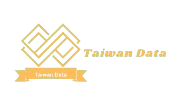Describing your target audience is a simple technique, but it is the foundation on which you will build all your future commercial activities. Understanding the goals, motivations, concerns, needs and problems of your target audience is the only sure way to competent planning and business development in any field.
Let’s look at why this is so important, telemarketing data look at examples of describing your target audience, and study common mistakes that can become an obstacle to making a profit.
Why Write a Target Audience Description? What are the Benefits for Business?
You can create and promote a product that fully satisfies the needs of potential buyers only if you have thoroughly studied your target audience. A clear understanding of it guarantees a lot of advantages – from creating relevant advertisements to developing measures to stimulate buyers and increase their loyalty.
The ability to work with the target audience allows you to always be one step ahead of your competitors. It is necessary to analyze consumers:
- marketers;
- entrepreneurs in the field of e-commerce;
- contextual and targeted advertising managers;
- copywriters working with sales texts, etc.
Hopes for spontaneous purchases in modern realities are a utopia, and in highly competitive areas – absurd.
Description of the target audience is absolutely irreplaceable in such cases:
- business planning;
- search for new clients;
- personalized offers;
- online store development;
- preparation of UTP;
- promoting a personal blog or developing groups on social networks;
- reducing advertising costs (determining optimal advertising channels, setting up targeting);
- conducting PR campaigns and various marketing events;
- scaling the business, expanding the client base.
By ignoring the stage of describing the target audience, you risk wasting your advertising budget by directing your marketing resources to groups of people who do not need your product in principle. Target audience for business is an effective way to increase sales while minimizing the costs of marketing tools.
Examples of target audience descriptions
First of all, it should be understood that the description and significant characteristics of the target audience are more difficult to collect the wider it is.
Example 1. Vague characteristic
Washing powder. Let’s answer the question – who buys it? Women aged 22-60. This answer does not take into account the properties of the product at all. It does not take into account what price category the product belongs to, what type of washing it is intended for, whether it has additional properties, whether it is hypoallergenic or not. attract awb directory decision makers in b2b markets A more precise description should include, at a minimum:
- marital status;
- average income;
- presence of children;
- amount of time free from work;
- attitude towards environmental issues, etc.
This data is also not exhaustive, but it can already bring you closer to sales. A vague description threatens excessively high advertising costs (and up to 70% of the budget will be wasted), low competitiveness of the product and its how to use webinars for b2b capture probable failure on the market.
